This is your Peruvian Gateway to new horizons...
Your Gateway to PeruOpportunities...
A land where dreams can come true
Peru is a country where your dreams can come true. From the lush Amazon rainforest to the towering Andes mountains and the dynamic coastal landscape, Peru offers a unique experience that captivates the hearts of all who visit the country.
Among the numerous and wonderful opportunities that distinguish Peru, below we offer brief information on only some of the multiple choices that this country offers to foreign citizens seeking new horizons in life, studies, work, housing, investment, etc.
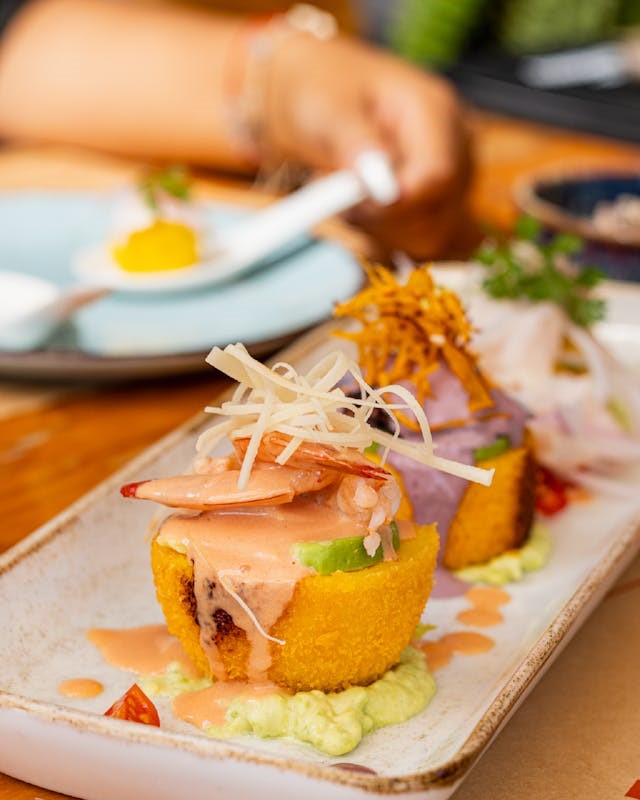
Peruvian gastronomy stands as a global icon, blending tradition, innovation, and exceptional ingredients to create flavors that captivate the world. Photo by Ruben Dao Cuentas via Pexels.
Peru: Clear-Cut Winner of the World's Leading Culinary Destination
In recent years, studying gastronomy and culinary arts in Peru has been considered a golden opportunity for global food enthusiasts seeking excellence.
Peru has been recognized multiple times as the world’s best culinary destination.
From 2012 to 2019—eight consecutive years—and again from 2021 to 2024, Peru has received the prestigious World’s Leading Culinary Destination award from the World Travel Awards (WTA) a total of 12 times. The only exception was in 2020, when the measures adopted to control the spread of the COVID-19 pandemic significantly impacted all economic activities, including gastronomy.
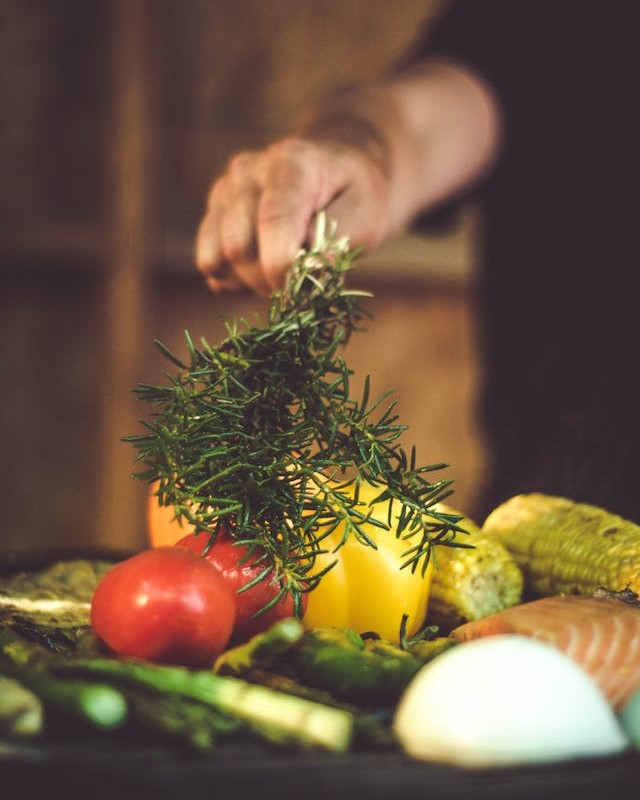
Peruvian gastronomy combines the best natural ingredients with culinary magic, creating dishes that captivate the world.
Photo by Narda Yescas via Pexels.
Peru: Number one gastronomy worldwide
Peru’s prestigious institutions, universities, and workshops offer top-tier gastronomy programs. Contact us if you want to enroll in gastronomy courses, internships, or workshops.
As of 2024, Peru has not only been recognized multiple times as the world’s best culinary destination, but it is also home to some of the finest restaurants globally. Central Restaurante was ranked the world’s number one in 2023, while the extraordinary Maido—ranked number one in Latin America multiple times—secured the sixth spot worldwide in 2023 and the fifth in 2024, among many other accolades. Both are located in Lima, the capital of Peru.
From another perspective, in 2017, 2018, 2019, 2021, and 2023, two of the world’s top 10 restaurants were in Peru, while in 2015, 2016, and 2022, at least one Peruvian restaurant ranked in the top 10, according to The World’s 50 Best Restaurants.
Our goal is to provide the best services
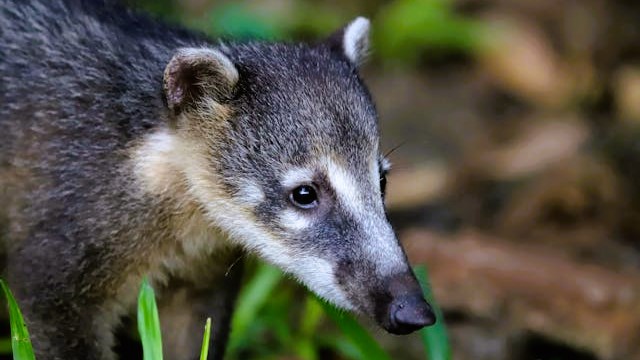
Coati: The Artisan Behind the World’s Most Expensive Coffee
The coati, or mishasho, selects the ripest coffee cherries in some regions of Peru, contributing to the creation of the world’s finest coffee. Photo by Stefania Saturni via Pexels.
The most exquisite and exclusive coffee in the world
If you have plans for the commercialization or industrialization of Peruvian coffee or other local products, feel free to contact us.
Peruvian coffee is among the finest in the world, offering a diverse range of flavors and aromas. One of its most renowned varieties is mishasho (or coati), considered the most exclusive and valuable coffee globally, with prices reaching up to $1,400 per kilo. What makes this coffee unique is its production process—before roasting, the beans pass through the digestive system of the mishasho, a small rodent.
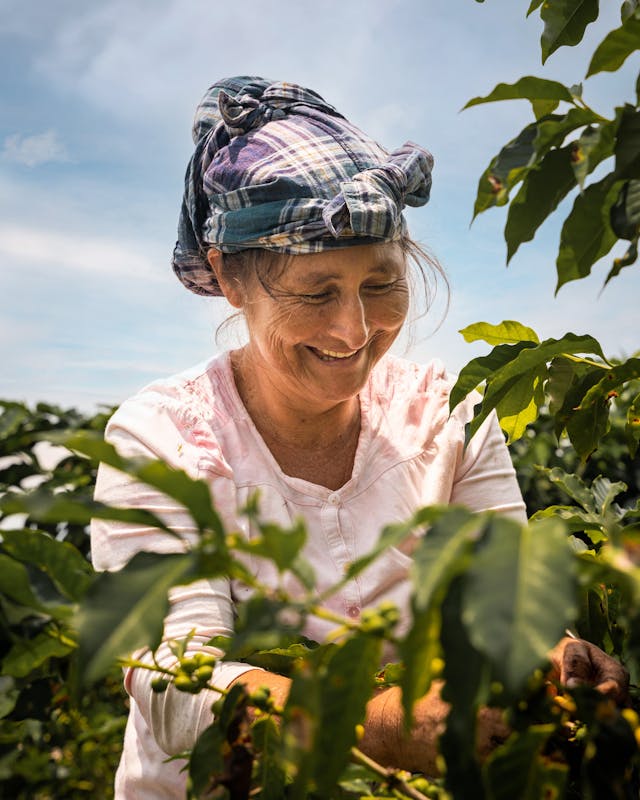
A coffee farmer in Moyobamba, Peru, harvesting coffee cherries. Photo by Bill Salazar via Pexels.
However, not all Peruvian coffee varieties are so rare or costly. Across the country, different regions cultivate high-quality coffee with exceptional taste and aroma, available at a wide range of prices.
For those interested in mastering barista skills, Peru offers specialized institutions and training centers. Additionally, the country is an excellent destination for entrepreneurs and coffee connoisseurs looking to market premium Peruvian coffee internationally.
Country of potato
Peru is the world cradle of the potato and has more than 3,500 varieties of potatoes, a surprising number that makes Peru number one in the world. The main headquarters of the International Potato Center is located in the Peruvian capital, the city of Lima. This delicious food, so well-known and consumed today throughout the world, came to other parts of the world from around Lake Titicaca, the highest navigable lake in the world, which is located 3,800 meters above sea level in Los Peruvian Andes, between Peru and Bolivia.
A farmer’s hands, covered in soil, holding freshly harvested potatoes. A reminder of the hard work behind the food we consume. Photo by Shiwa Yachachin via Pexels.
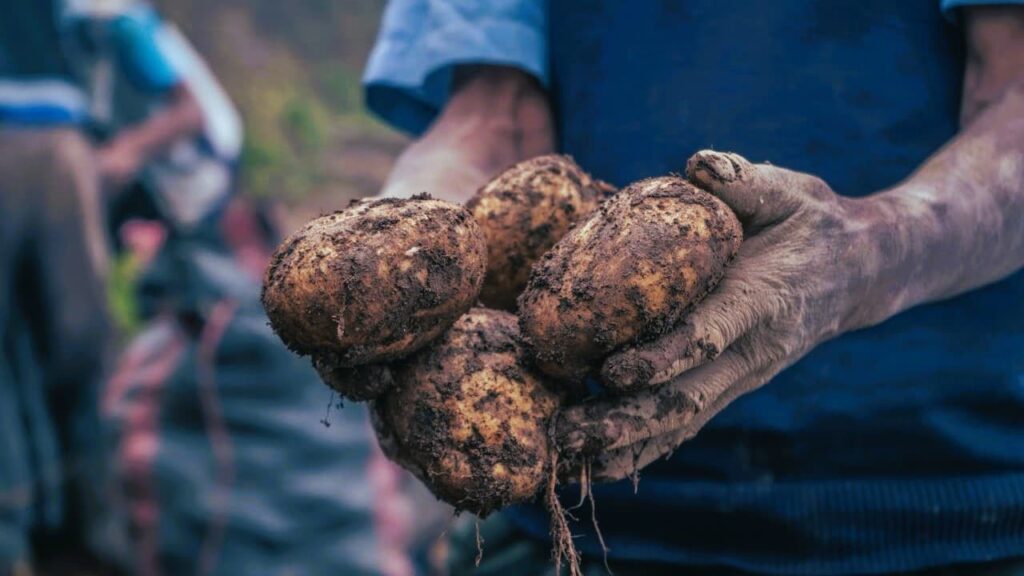
A Place to Live, Learn, Work, and Invest in Your Future
Education and Academic Training
Public education is free at the initial, primary, and secondary levels, though the quality can vary between urban and rural areas. Private schools, however, offer varying levels of quality based on socioeconomic factors, with the most prestigious institutions providing better infrastructure, technology, and language programs, especially in English.
For higher education, Peru offers a wide range of opportunities. Public universities are free or low-cost but often face infrastructure challenges. Private universities, although more expensive, provide greater resources and business connections, excelling in fields like economics, law, and engineering. These institutions offer a variety of undergraduate and postgraduate programs in areas such as social sciences, technology, and medicine. Some universities also offer courses in English to accommodate international students.
Among the top universities in Peru is the Pontificia Universidad Católica del Perú (PUCP), which excels in humanities, social sciences, and technology. Meanwhile, the Universidad Nacional Mayor de San Marcos (UNMSM), the oldest in the Americas, is renowned for its scientific research and academic quality. Similarly, the Universidad de Lima and the Universidad del Pacífico are recognized for business administration and economics. Additionally, the Universidad Peruana Cayetano Heredia leads in medicine, the Universidad Nacional de Ingeniería (UNI) in engineering, and the Universidad San Ignacio de Loyola (USIL) in business and entrepreneurship.

A Journey Towards Knowledge
A young graduate walks forward, embracing the promise of a bright future. Photo by Stanley Morales via Pexels.
International students can also benefit from exchange programs and scholarships, while enjoying Peru’s rich culture, history, and affordable cost of living.
Additionally, Peru’s technical institutes offer specialized programs in areas such as tourism, gastronomy, and IT. These shorter, practical programs are ideal for those seeking quick entry into the workforce.

Peru offers exceptional opportunities for aspiring baristas, from learning coffee preparation techniques to understanding the production process, all in one of the world’s leading coffee-producing countries. Photo by Amelia Hallsworth via Pexels.
Specialized and Professional Training
Peru provides diverse opportunities for specialized training, with options that reflect its rich cultural and natural heritage. In the culinary world, Peru’s acclaimed gastronomy makes it a prime destination for aspiring chefs. Renowned culinary schools offer training in traditional and contemporary techniques, alongside access to some of the world’s finest ingredients.
For those interested in coffee culture, Peru, a major coffee producer, offers specialized courses for baristas. Students gain expertise in coffee preparation and knowledge of the production process, from farm to cup.
Peru also offers traditional arts and crafts programs, allowing students to learn skills such as pottery, weaving, and jewelry making. These courses offer not only artistic techniques but also a deeper connection with Peru’s cultural heritage.
Finally, the tourism and hospitality sectors provide ample training opportunities. With Peru being one of Latin America’s most visited countries, there are numerous programs in hospitality management and tour guiding, ideal for those seeking careers in this thriving industry.
Investment Opportunities for Foreigners
Peru has seen consistent economic growth, fueled by key sectors like mining, agriculture, tourism, and services, making it one of Latin America’s most dynamic economies. With strong macroeconomic stability, low inflation, and a favorable climate for foreign investment, the country attracts international investors.
Mining is a major sector, with Peru being a top global producer of copper, silver, gold, and zinc. Opportunities include new projects and sustainable technologies. Agriculture also shows great potential, with high-quality products like coffee, cocoa, and asparagus in growing demand globally.
Infrastructure and technology are expanding, with ongoing investments in roads, ports, airports, and renewable energy, offering long-term investment opportunities. The tourism industry has also flourished, featuring archaeological sites like Machu Picchu and eco-tourism.
Peru’s regulations favor foreign investment, allowing companies to operate freely in most sectors, with guaranteed capital repatriation. Overall, the country offers a stable environment and diverse opportunities for long-term success in various industries.
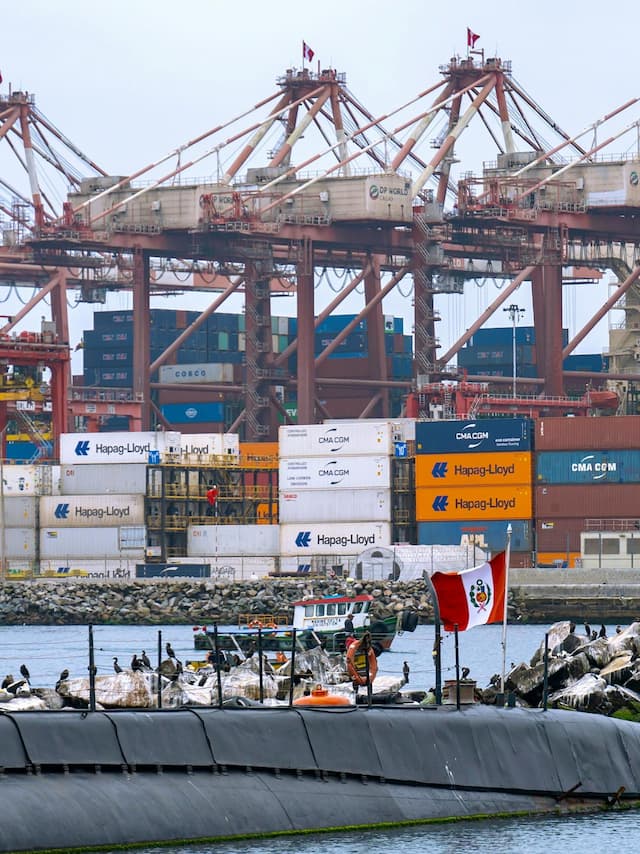
From the Port of Callao, Peru’s key trade hub, to the colossal Port of Chancay—a $3.5 billion mega project poised to handle six million tons of cargo annually—Peru is emerging as a powerhouse in Pacific maritime logistics. Photo by Daniel Reynaga via Pexels.
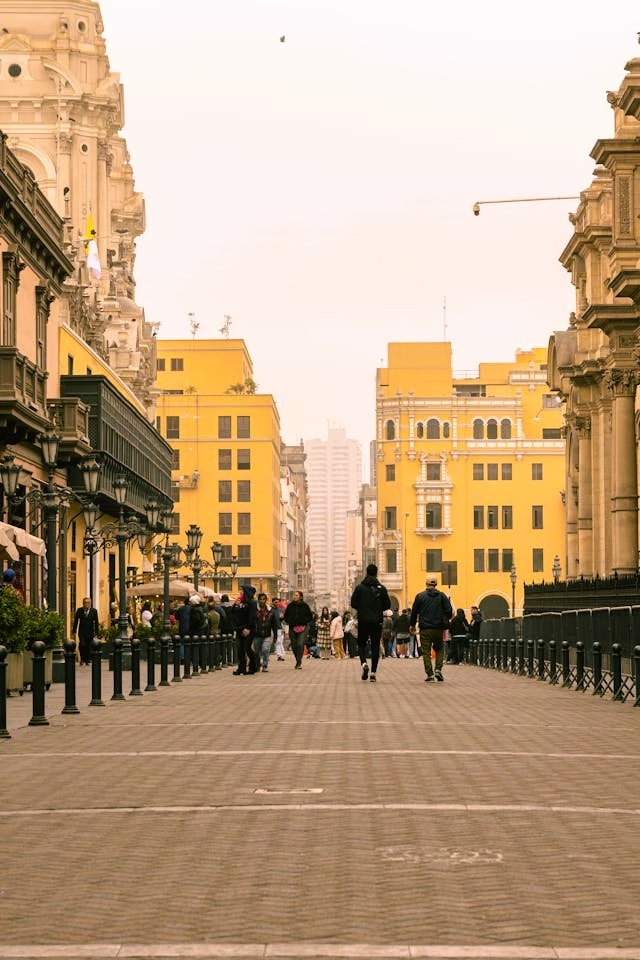
A vibrant view of Lima’s historic and modern architecture, showcasing Peru’s blend of cultural heritage and urban real estate opportunities. Photo by Joel Alencar via Pexels.
Real Estate Opportunities for Foreigners
Peru presents a wide array of real estate opportunities tailored to diverse preferences and goals. Whether you seek a modern apartment in vibrant cities like Lima, a tranquil home in the picturesque highlands of the Andes, or a unique retreat in the lush Amazon rainforest, we are here to assist you every step of the way.
The real estate market in Peru is as varied as its geography. Cities such as Lima, Arequipa, and Cusco attract many foreign buyers with their residential and commercial properties, while emerging cities in the interior and jungle regions, like Iquitos and Tarapoto, offer more affordable options with development potential and proximity to nature.
For those interested in agricultural or industrial investments, Peru’s fertile lands and expanding infrastructure present significant opportunities. Coastal and highland areas are ideal for crops like coffee and avocados, and industrial investors benefit from free trade zones and robust logistics networks.
Through our services, we connect you with tailored real estate opportunities across Peru. From identifying properties that align with your vision to navigating legal requirements, we provide expert support and market insights to ensure a seamless experience.
With a stable legal framework and a growing economy, Peru offers an appealing landscape for residential, commercial, and industrial real estate investments. Let us help you explore and secure the property that best fits your aspirations.
Extreme sports
Peru is the dream country of many athletes from all over the world, who come to the country to practice adventure sports, including canoeing, surfing, cycling, mountaineering, climbing, etc. Its more than 3,000 kilometers of coastline and more than 1,000 rivers that flow throughout the country, in addition to a rich and varied geography in its three regions of coast, mountains and jungle, make the country the favorite destination of a large number of foreign athletes.
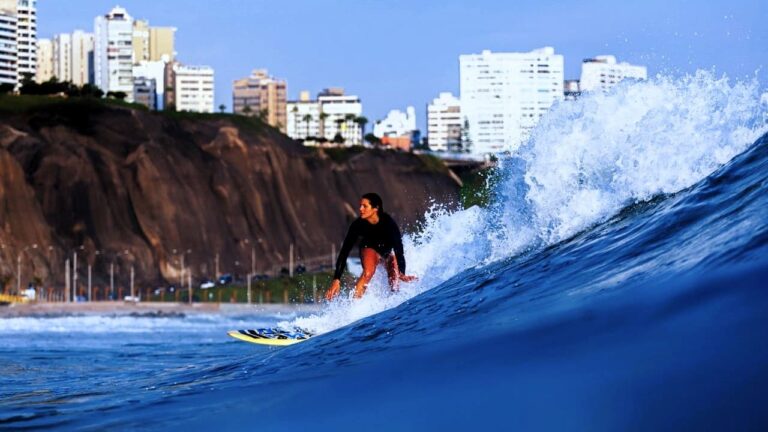
Surfing in Lima’s coastal waters near the Costa Verde Circuito de Playas, where the natural brown cliff, standing at approximately 50 meters tall, creates a striking backdrop. This area highlights the unique blend of natural beauty and urban development, with modern buildings perched atop the cliff overlooking the sea.
Photo by Mauricio Espinoza Gavilano via Pexels.
Peru’s coastline also makes it ideal for surf enthusiasts. Coastal cities like Lima, Máncora, and Punta Rocas are home to not only stunning waves but also schools that offer expert training for surfers of all levels. The country’s proud surfing heritage, which includes multiple global titles, makes it an ideal location for those passionate about riding the waves.
Peru is also a haven for adventure sports enthusiasts. From white-water rafting in the Urubamba River to kayaking in the serene waters of Lake Titicaca, the country offers thrilling experiences amidst breathtaking natural landscapes. Other activities like paragliding over the Sacred Valley and mountain biking in the Andes make Peru a prime destination for those seeking adrenaline-pumping adventures.
Peruvian House of Literature
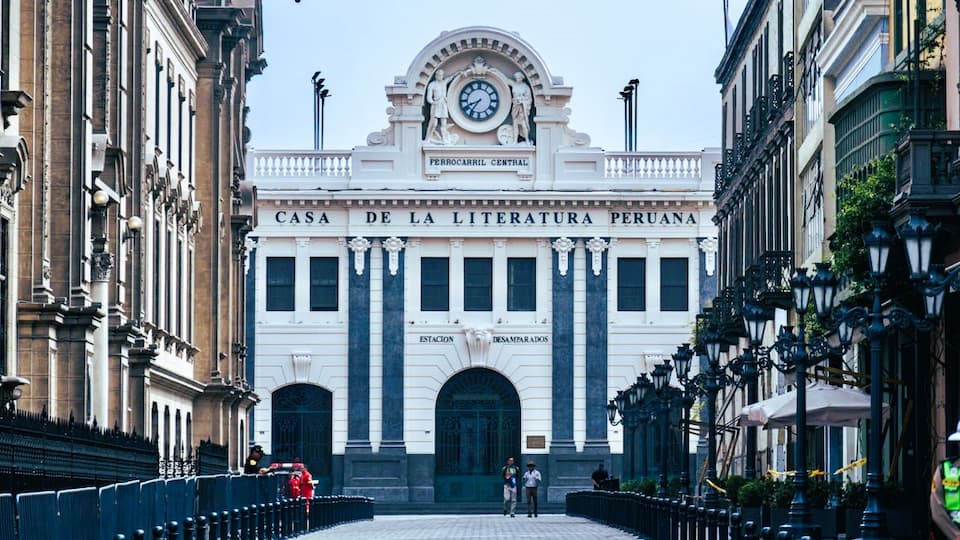
The Peruvian House of Literature (Casa de la Literatura Peruana), located in the historic Desamparados Train Station (Estación de Desamparados), is a space dedicated to Peruvian literature. The station operated from 1912 to 2005 as a hub for the Lima-Huancayo railway route. Photo by Daniel Reynaga via Pexels.
Grace and Elegance:
Dancing in the Heart of the Peruvian Amazon

Young women in Rioja, San Martín, perform a traditional dance with grace and pride, celebrating Peru’s cultural heritage in the Peruvian Amazon Region. Photo by Franklin Santillan A., courtesy of Pexels.
Cliffs, Roads, and Ocean
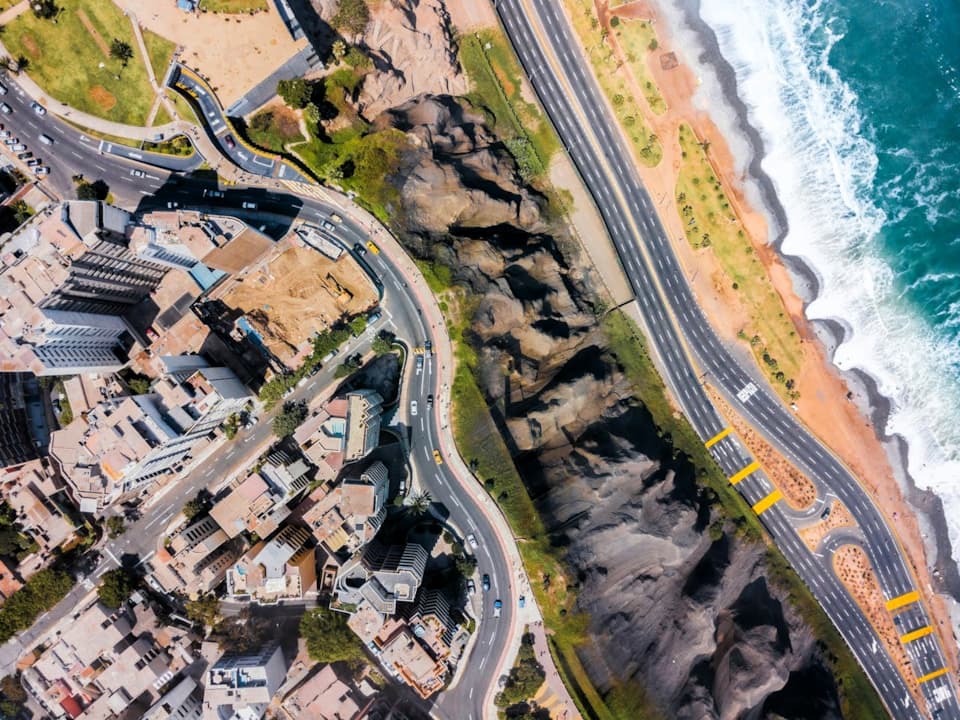
A glimpse of Lima’s coastline: where urban elements meet natural cliffs and the vast Pacific Ocean. Photo by Willian Justen de Vasconcellos via Pexels.
Relevant information
Language
In 2021, according to figures from the National Institute of Statistics and Informatics, 82.6% of the Peruvian population had Spanish as their mother tongue, while the rest spoke some native language, including Quechua (13.9%) and Aymara (1 .7%).
Development:
Perú is considered a developing country, but at the same time, it is one of the fastest-growing in the Latin America.
Demography:
In 2023, the country’s population reached 33,726,000 inhabitants, according to the National Institute of Statistics and Informatics –INEI. Of the population aged 12 and older, 25.7% consider themselves to be of indigenous origin, 3.6% of African descent, and 5.9% of white origin. Meanwhile, 60.2% identify as mestizo. More than 10 million live in the capital city of Lima.
Tourist attraction:
During 2023, more than 2.5 million international tourists entered Peru. In 2019, before the coronavirus pandemic, this figure was just over 4.37 million tourists.
Destination for immigrants:
The country is home to a large number of descendants of immigrants from other continents in different periods, especially from European countries including, among others, Italy, Spain, Poland and Ukraine. Among the descendants of immigrants, there are also a considerable number of people from sub-Saharan countries and the Middle East and Asia, including Syria, Lebanon, Japan and China.
Talk to us
Have any questions? We are always open to talk about your life, education, work, housing or investment plans in Peru, and how we can help you make them come true.